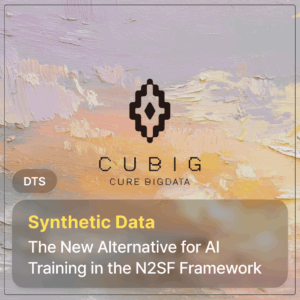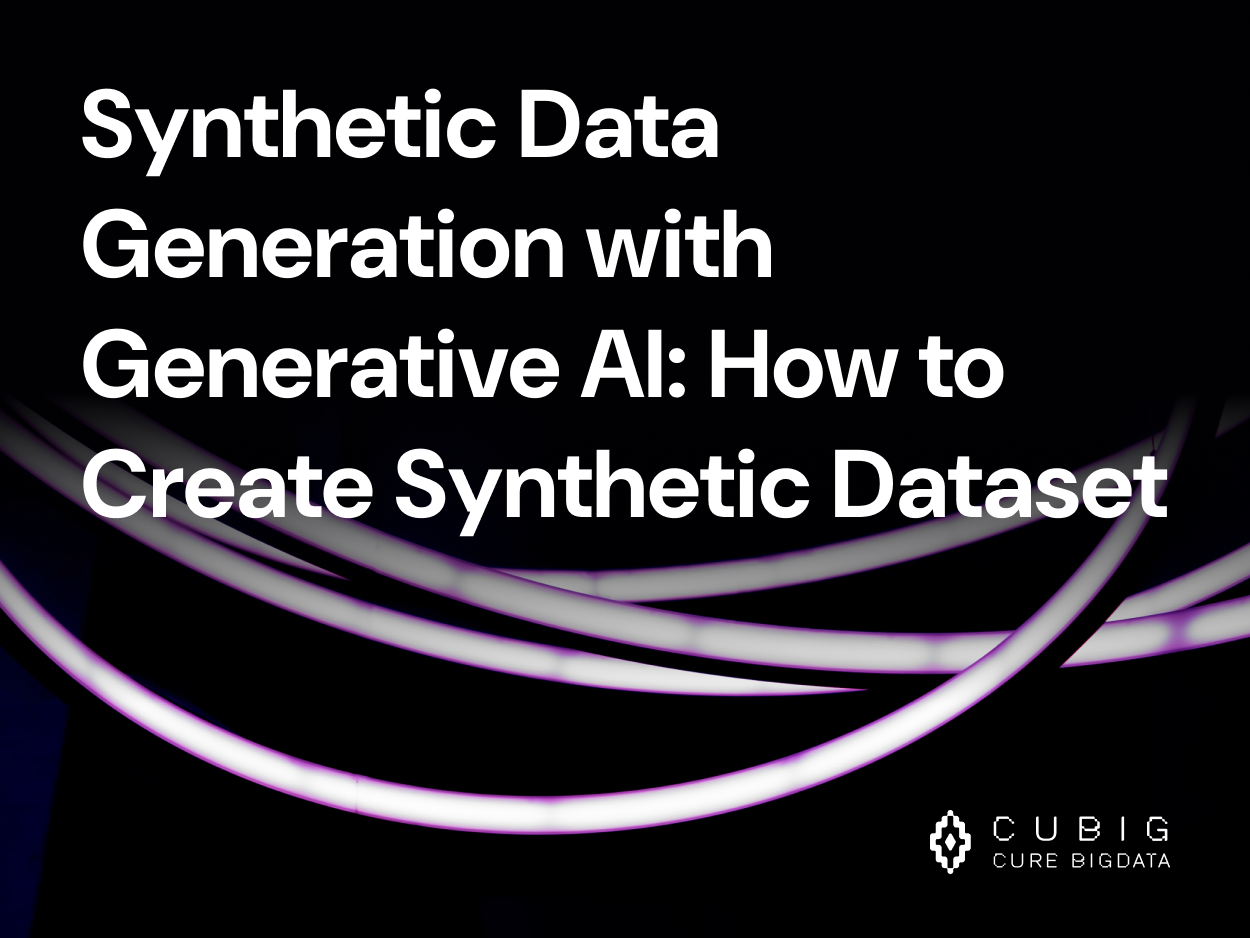Synthetic Data Generation with Generative AI: How to Create Synthetic Dataset
Table of Contents
What is Synthetic Data Generation with Generative AI?
Definition and Key Concepts
Synthetic data generation with generative AI refers to the use of advanced machine learning models to produce artificial datasets that mimic the structure and characteristics of real-world data. These datasets are created without relying on actual personal or sensitive information, making them ideal for training, validating, and testing AI systems in a privacy-preserving way. The generated data can include text, images, audio, or tabular information, tailored to meet specific needs of various machine learning workflows. It enables scalable experimentation, accelerates model iteration, and provides a safe environment for innovation in data-restricted industries.
How Generative AI Differs from Traditional Data Synthesis Methods
Traditional data synthesis often relies on predefined rules, statistical methods, or human-designed templates to generate data, which can result in limited diversity and lower fidelity. In contrast, generative AI models like GANs (Generative Adversarial Networks), VAEs (Variational Autoencoders), and transformer-based models learn patterns and relationships from real datasets, enabling them to produce more dynamic, realistic, and contextually rich data. This adaptability allows generative AI to create data that closely simulates real-world conditions and behaviors, making it more effective for training complex AI systems. These models improve over time through iterative learning and feedback loops, allowing for constant refinement of data quality and relevance.
Why Generative AI is Essential for Modern Data-Driven Systems
Generative AI plays a crucial role in modern AI development by addressing the limitations of traditional data sources. It enables organizations to generate large volumes of labeled data quickly and cost-effectively, which is essential for training high-performance models. Additionally, it supports innovation in sectors where data is scarce, such as rare disease research or emerging markets. Synthetic data also enhances compliance with privacy laws like GDPR and HIPAA by removing direct dependencies on real user data. Moreover, it provides a safe environment for testing AI behavior in controlled edge-case scenarios without the risk of data leakage. As AI systems become more complex, generative AI ensures that data pipelines remain adaptable, ethical, and aligned with evolving business needs.
Core Technologies Behind Synthetic Data Generation
Text-to-Data: Using Language Models for Data Synthesis
Large language models (LLMs), such as GPT and similar architectures, are capable of generating synthetic datasets in a variety of formats, including natural language text, computer code, and structured tabular data. These models can be fine-tuned on domain-specific corpora to produce highly relevant outputs, making them especially valuable for tasks in natural language processing (NLP), customer service automation, and documentation generation. Text-to-data generation with LLMs enables scalable creation of high-quality content that mirrors real-world inputs while maintaining control over output structure and tone. This approach allows teams to simulate user interactions, generate FAQs, or build dialogue datasets with minimal human input. Additionally, prompt engineering and reinforcement learning from human feedback (RLHF) can further refine generation accuracy, making LLM-driven datasets more adaptable to changing user expectations and task complexity.
GANs, VAEs, and Diffusion Models: Overview and Use Cases
Generative Adversarial Networks (GANs) consist of a generator and a discriminator model that work in tandem to create increasingly realistic synthetic outputs, often used in image and video generation. Variational Autoencoders (VAEs) learn latent representations of data to reconstruct or generate similar instances, useful in tasks involving anomaly detection or content personalization. Diffusion models, a newer approach, iteratively refine random noise into structured outputs, offering exceptional quality in image synthesis and beyond. Each of these technologies has unique strengths that cater to different domains and data types. Their flexibility enables them to generate domain-specific outputs, from medical scans to financial transaction logs. Additionally, hybrid models and ensemble approaches are emerging, combining different generative mechanisms to improve quality, speed, and realism across varied applications.
Integration with Large Language Models (LLMs)
Integrating synthetic data with LLMs allows for the fine-tuning and adaptation of these models to specific business needs or underrepresented topics. By creating synthetic data from real data sources—such as customer queries, technical documentation, or historical logs—organizations can enrich the model’s knowledge without exposing private or regulated information. This approach not only enhances model robustness and adaptability but also ensures ethical AI development by minimizing bias and maintaining transparency in data use. Moreover, synthetic data can help test model responses, evaluate alignment with company policies, and simulate multilingual or domain-specific scenarios efficiently. Fine-tuned LLMs supported by synthetic datasets can perform better in specialized tasks, such as legal reasoning, healthcare recommendations, or technical support automation.
How to Create a Synthetic Dataset Using Generative AI
Step 1: Define Your Data Goals and Evaluation Metrics
Start by identifying the specific problem you want to solve and the type of data required. This includes deciding on the structure (e.g., text, image, tabular), the quantity needed, and the characteristics it should reflect. Define clear evaluation metrics to assess the usefulness of the generated data, such as distribution similarity, diversity, and model performance improvements. Establishing these goals early helps maintain focus and ensures the final dataset meets intended use-case requirements.
Step 2: Choose the Right Generative Model for Your Use Case
Select a generative model that best aligns with your data type and objectives. For image generation, GANs and diffusion models are often suitable. For textual or structured data, transformer-based language models or VAEs may be more effective. Consider factors like scalability, ease of customization, training complexity, and resource availability. Conduct small-scale tests to determine which architecture performs best in replicating or extending your target data patterns.
Step 3: Generate and Curate Data
Use the selected model to produce initial batches of synthetic data. Carefully review and filter this data to remove anomalies, duplicates, or irrelevant outputs. Curating the dataset ensures quality and alignment with your target use case. Techniques such as prompt tuning or post-generation filtering can enhance output relevance. Metadata tagging and quality scoring can also streamline the refinement process and support downstream data validation workflows.
Step 4: Validate, Label, and Augment as Needed
Evaluate the quality of your synthetic data against the predefined metrics. Validation may involve statistical checks, human review, or testing against a baseline model. Add labels where required and consider augmenting the data through transformations or noise injection to increase robustness and variability. Manual annotation or semi-supervised labeling tools can improve label accuracy, and augmentation techniques such as paraphrasing or geometric distortion help expand data diversity.
Step 5: Test the Synthetic Dataset in Real Scenarios
Deploy the synthetic dataset in a controlled environment to assess its impact on model training or performance. Compare results with models trained on real data to measure effectiveness. Use insights from these tests to iteratively improve data generation strategies, ensuring that synthetic datasets are reliable and beneficial for production use. A/B testing, performance benchmarking, and edge-case simulation are common techniques to evaluate real-world applicability and fine-tune both the data and the model it supports.
Creating Synthetic Data from Real Data: Approaches and Cautions
Data Masking and Anonymization Techniques
Transform sensitive information into non-identifiable formats using techniques such as tokenization, generalization, and suppression. These methods retain the structural integrity and statistical properties of the original data while reducing the risk of re-identification. Masking is particularly useful in healthcare, finance, and legal domains where compliance with privacy regulations is critical. When used appropriately, these methods help balance privacy with analytical utility, enabling safe use of data for machine learning and analytics without violating data protection laws.
Data Transformation and Style Transfer
Apply data transformation techniques to simulate different scenarios or data styles. For instance, altering sentence tone, rephrasing content, or converting numerical data into categorical labels can increase dataset variability. Style transfer models are especially valuable in generating linguistic or visual variations, supporting the creation of more robust and generalizable AI models. This process not only enhances the diversity of training data but also allows simulation of multilingual contexts or industry-specific jargon, contributing to better domain adaptation.
Ensuring Diversity Without Compromising Privacy
To maintain a balance between dataset diversity and data privacy, leverage techniques like differential privacy, k-anonymity, or synthetic oversampling. It’s essential to ensure that no individual record can be traced back to a real-world counterpart while still capturing meaningful patterns. Diversity should reflect real-world scenarios, edge cases, and minority representations to improve model fairness and utility. Establishing diversity metrics and regularly auditing synthetic outputs can help detect gaps and ensure inclusive AI development practices.
Use Cases for Synthetic Data Generation with Generative AI
Model Pretraining in NLP and Computer Vision
Synthetic data is commonly used to pretrain models when real-world datasets are insufficient, biased, or costly to collect. In natural language processing (NLP), it helps generate diverse sentence structures, entities, or conversation patterns. In computer vision, it enables the creation of labeled images at scale, covering various lighting, angles, and object positions. These synthetic datasets improve generalization and reduce overfitting by exposing models to a wider variety of inputs. Furthermore, pretraining with synthetic data can shorten convergence time and improve model performance on downstream tasks.
Simulation for Edge Cases and Rare Events
Rare events such as fraud, equipment failure, or critical safety scenarios are hard to capture in large quantities. Synthetic data enables simulation of these edge cases, allowing AI systems to learn to recognize and respond to low-frequency but high-impact events. This increases the reliability of AI in real-world applications, especially in safety-critical systems like autonomous driving or financial monitoring. By repeatedly generating variations of these scenarios, teams can test models under stress and validate their decision-making logic.
Data Supplementation in Regulated or Low-Resource Domains
In fields like healthcare, finance, and defense, data sharing is often restricted due to legal or ethical constraints. Synthetic data generation using generative AI provides a compliant alternative to real data. By modeling data distributions from anonymized or minimal samples, organizations can create representative datasets for research and development without violating privacy laws. Similarly, in low-resource languages or underrepresented domains, synthetic data helps fill gaps and expand model capabilities. This enables equitable AI development and allows for innovation in underserved areas.
Stress Testing AI Models for Robustness
Synthetic datasets allow developers to create extreme or adversarial scenarios to evaluate model stability under stress. This includes generating high-noise inputs, contradictory examples, or boundary conditions. By exposing models to challenging inputs, organizations can detect weaknesses, improve decision boundaries, and ensure consistent performance across variable environments. This form of stress testing is vital for applications where reliability and safety are paramount. It also provides insights into failure modes and supports the design of fallback mechanisms in production systems.
Azoo AI’s Synthetic Data Technology
Azoo AI leverages advanced generative AI techniques to produce synthetic data that closely replicates the statistical properties and patterns of original datasets without compromising privacy. Its technology ensures high fidelity and diversity, enabling accurate model training and robust validation across various domains. By applying strong privacy-preserving methods such as differential privacy, Azoo AI allows organizations to safely augment limited or sensitive data, accelerating AI development while maintaining compliance with regulatory standards. This approach empowers users to overcome data scarcity and privacy challenges efficiently.
Benefits of Using Synthetic Data with Generative AI
Cost Efficiency and Speed in Dataset Creation
Synthetic data significantly reduces the time and cost associated with traditional data collection and labeling. By leveraging generative models, organizations can rapidly produce large-scale datasets tailored to specific needs without incurring expenses tied to data sourcing, manual annotation, or legal compliance with third-party data providers. This efficiency shortens AI development cycles and accelerates time-to-deployment.
Increased Diversity and Customization
With generative AI, datasets can be customized to reflect diverse scenarios, edge cases, and specific domains that are underrepresented in real-world data. This flexibility enables more inclusive and adaptable models. Teams can simulate rare events or variations in user behavior to enhance training coverage and address domain-specific challenges.
Compliance with Data Privacy Regulations
Generative AI allows organizations to create data that mimics real-world patterns without using any actual user or sensitive data. This synthetic approach eliminates the risks associated with handling personal information and aligns with global data protection laws such as GDPR, HIPAA, and CCPA. It ensures ethical AI development while maintaining operational agility in restricted environments.
Improved Model Accuracy and Robustness
Synthetic datasets provide controlled environments for training models across a broad range of conditions. By integrating variations and edge scenarios into the training data, models become more resilient to noise, data drift, and unexpected inputs. This leads to improved accuracy, generalization to unseen data, and better performance in production settings.
Challenges and Considerations
Data Quality and Overfitting Risks
If synthetic data is generated without sufficient variation or realism, it can introduce patterns that do not exist in real-world environments. This can lead to models learning superficial features and overfitting to the synthetic distribution, rather than generalizing effectively. Rigorous validation and data diversity checks are necessary to mitigate these risks.
Ethical Concerns in Data Fabrication
Synthetic data must be used responsibly to avoid misleading outputs or unjustified confidence in AI systems. In safety-critical fields such as healthcare, law enforcement, or finance, poorly designed synthetic datasets can lead to dangerous outcomes. Ethical oversight, transparency in data provenance, and limitations of use must be clearly defined.
Model Bias and Representation Errors
Biases in training data often translate into biased synthetic data if generative models replicate underlying skewed distributions. Without proper bias mitigation strategies, synthetic datasets can exclude minority patterns or amplify stereotypes. Ensuring representative sampling and fairness auditing is critical in responsible dataset creation.
Technical Barriers in Evaluation and Deployment
Evaluating the performance and reliability of synthetic data requires specialized metrics and tools. Traditional validation methods may not detect issues unique to artificially generated content. Additionally, integrating synthetic data into existing pipelines can introduce compatibility or infrastructure challenges that require domain-specific engineering solutions.
The Future of Synthetic Data with Generative AI
Real-Time Synthetic Data Streams for Adaptive Training
Future AI systems will benefit from continuously updated synthetic data streams that adapt to shifting environments or user needs. These real-time datasets will allow models to learn incrementally, enabling responsive updates based on live inputs and reducing the lag between data collection and deployment. As organizations move toward continuous learning and model retraining, synthetic data pipelines will become integral to sustaining AI responsiveness in production environments.
Foundation Models Creating Task-Specific Datasets
Multimodal foundation models like GPT-4 or image-text transformers are increasingly capable of generating data tailored to specific industries, tasks, or regulatory contexts. These models will automate the creation of domain-aligned datasets without the need for extensive human intervention, accelerating development in fields such as legal tech, pharmaceuticals, and cybersecurity. The ability to condition generation based on goals, style, or compliance rules will make these systems essential tools for scalable, context-aware data production.
Increased Integration with AI Governance Platforms
As synthetic data becomes central to AI workflows, it will be tightly integrated with platforms responsible for governance, compliance, and model monitoring. This ensures transparency in how synthetic datasets are used, tracks lineage and quality over time, and supports auditability in regulated environments. Integration with governance tools also fosters collaboration between data scientists, compliance officers, and domain experts. Future ecosystems may feature built-in policy engines that automatically validate and approve synthetic data usage based on organizational and regulatory standards.
FAQs
What is synthetic data generation using generative AI?
Synthetic data generation using generative AI is the process of using models such as GANs, VAEs, or large language models to create artificial datasets that simulate real-world data. This method enables scalable and privacy-preserving data creation for AI development.
How do I create a high-quality synthetic dataset?
To create a high-quality synthetic dataset, define your data goals, select an appropriate generative model, generate diverse samples, validate against key metrics, and refine outputs iteratively. Incorporating domain knowledge and post-processing can further enhance quality.
Can synthetic data fully replace real-world data?
Synthetic data can complement or partially replace real data, especially in cases where privacy, availability, or cost is a concern. However, it is often used alongside real data to improve model performance, simulate rare scenarios, or augment existing datasets.
What industries benefit most from this technology?
Industries such as healthcare, finance, autonomous vehicles, manufacturing, retail, and cybersecurity benefit from synthetic data due to their high sensitivity to data privacy, the need for rare event simulation, or data scarcity issues.
How does Azoo AI differ from other synthetic data solutions?
zoo AI stands out by generating synthetic data without accessing any original sensitive data, ensuring complete data privacy from the start. It applies rigorous privacy-preserving methods like differential privacy to guarantee that the synthetic data cannot be traced back to individuals. Furthermore, Azoo AI provides comprehensive evaluation reports that validate data quality, statistical fidelity, and privacy compliance, giving users clear insights into the synthetic dataset’s reliability and safety. This transparent, privacy-first approach differentiates Azoo AI in the synthetic data landscape.
CUBIG's Service Line
Recommended Posts
-

Launching LLM Capsule for macOS: using generative AI at work while staying compliant with privacy regulations
-

Synthetic data AI training: a new path for public institutions in the N2SF era
-

Why Public Institutions Need DTS for Safe Data Opening & Utilization(feat. 2025 Public Data Provision & Data-Driven Administration Evaluation Guidelines)






